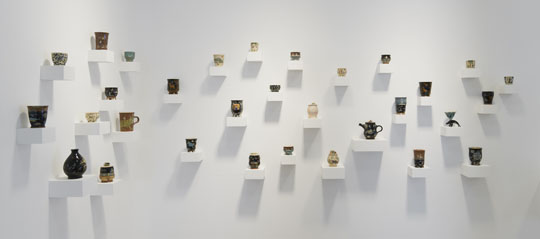Craft was maligned in Japan's Meiji Era (1868-1912) as the transposition of Western aesthetic theory denigrated it in relation to grand ideas of "fine art." All the while, though, it was an important export industry and a core component of Japan's contributions to various world expositions. It became resurgent, however, as a modern Japanese art form from the 1920s with the establishment of the Mingei (Arts of the People) movement, and several of the prominent figures going on to achieve "artist-potter" status, such as Tomimoto Kenkichi and Kawai Kanjiro. Further heretic status was reserved for Yagi Kazuo who absolved the utilitarian nature of the craft object.
In recent years, crafts have been rehabilitated in the contemporary art world — so offering the context for the ongoing exhibition, "The Wonderland of Ceramic Art," at the Tomio Koyama Gallery, Kyoto, which takes up five Kyoto-based ceramic artists and the artist group fujita+chisato. All the artists are emerging, and the show was curated by Mikako Sawada, author of "Kyoto Utsuwa Sampo," a recent guide to Kyoto ceramics.
Kaoru Taniuchi trained in textiles and that early interest shows in the way she treats the clay quite literally as a material that can be folded and draped into concave forms. The smaller works placed on horizontal surfaces could function as dishes, though her larger structures are hung on the wall, their surfaces folding in on themselves into slitted openings. Lines are scraped into the surface of the forms while the clay is still wet and the often cool-colored glazes appear like stains spreading through fabrics.



















With your current subscription plan you can comment on stories. However, before writing your first comment, please create a display name in the Profile section of your subscriber account page.